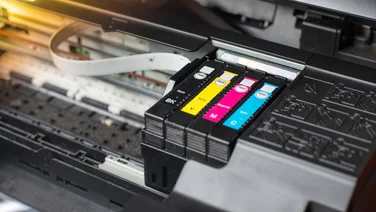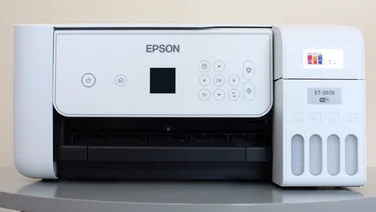To help us provide you with free impartial advice, we may earn a commission if you buy through links on our site. Learn more
- Canon PowerShot G5 X Mark II review: What you need to know
- Canon PowerShot G5 X Mark II review: Price and competition
- Canon PowerShot G5 X Mark II review: Features and design
- Canon PowerShot G5 X Mark II review: Photo quality
- Canon PowerShot G5 X Mark II review: Video quality
- Canon PowerShot G5 X Mark II review: Verdict








- Convenient, take-anywhere build
- Great image quality
- Excellent EVF
- Very expensive
- Non-interchangeable lens
Theres life in the old dog yet: mass market compact cameras might have gone the way of the dodo, but Canon is betting that the high-end combo of a small, convenient body with good image quality might lure travelling photographers or perhaps pros after a handy take-anywhere camera that shoots better images than a smartphone without the hassle of a DSLR.
READ NEXT: The best cameras you can buy right now
Canon PowerShot G5 X Mark II review: What you need to know
The G5 X Mark II follows (natch) the three and a half-year-old G5 X, and keeps things interesting by redesigning the G5 X Mark IIs predecessor as it heads out to pasture. Gone is the faux-DSLR shape with the EVF hunched over the middle of the lens instead, the EVF is now a spring-loaded number recessed in the camera.
There are a few interesting changes inside, too. Resolution is fractionally down on the original G5 X where the Mark I had 20.2 effective megapixels, the Mark II has 20.1. The sensor is the same size as that in the original G5 X, but its now a stacked CMOS unit which means, in theory, faster data readout and therefore better performance.
Canon PowerShot G5 X Mark II review: Price and competition
At £849, the G5 X Mark II costs a pretty penny. At this price youre not only looking at other decent compacts when it comes to competition but some tasty interchangeable lens cameras too. The Fujifilm X-T30, for example, costs just £50 more but offers a huge range of lenses, similar body controls and, by comparison, a whopping 26.1-megapixel APS-C sensor.
Calling the competition fierce barely scratches the surface. For this money you could have the Canon EOS 77D, an APS-C DSLR with a 45-point AF system and compatibility with an insanely large range of lenses or, if youre the eBay sort, a dealers choice of older pro equipment.








If youre determined to get a compact and there are plenty of reasons why that might be a good idea competition at this level is pretty rarified. The Sony RX100 VI is about as close youll come, although thats more expensive by about £300; it does offer a longer lens (the Sony stretches to 200mm and the G5 X Mark II to 120mm) and more autofocus points (315 to the Canons 31). If youre in the market for a high-end compact, it might be worth waiting to read reviews of the new Sony RX100 VII, announced this summer and coming to a review page near you soon.
All of which means: the G5 X Mark II cant just be stacked with features although it does have to be it also needs to do everything brilliantly to justify a price that could buy a very competent DSLR with much more room for expansion.
Canon PowerShot G5 X Mark II review: Features and design
The outgoing G5 X had a DSLR-lite design, with a lump on top of the lens that accommodated the EVF. The EVF has been sucked into the camera itself and now sits beneath a spring-loaded trapdoor. The result is that the G5 X Mark II looks a lot more like a traditional compact, albeit one with a lens that protrudes a little from the body, even when its retracted. The protruding lens is functional, though as on the original G5 X, theres a multi-function ring that can be used to set shutter or aperture value.
The body is otherwise pared-back and pleasing to hold. The rubber grip isnt a patch on the ergonomics of full-size DSLRs but the G5 X Mark II is nonetheless comfortable, and the dimensions of the camera are kept slimline by the omission of a proper flash hotshoe on the top of the camera. A double-jointed spring-loaded flash is all you get, which will depress the appeal of the G5 X Mark II for those hoping to use external lights.








The camera is otherwise well appointed with controls. The top, apart from the obvious shutter release and zoom control, has a pair of control wheels, one for selecting the camera mode from the usual suspects the full range of PASM modes plus a dedicated video mode, exposure bracketing and various Scene options and a larger one beneath for exposure compensation.
The latter is particularly useful, especially with the G5 X Mark II offering live exposure simulation, as it means you can get your exposure dead-on in camera rather than leaving yourself with processing work to do afterwards.








The back of the camera again has a practical, rather than overbearing, set of controls. The direction pad works as a series of shortcuts to features such as focus mode, burst settings and flash control, and is surrounded by a thumbwheel. The latter is small about the diameter of a 1p coin but with a knurled edge and pleasing click as it turns, its easy enough to use.
Otherwise the rear of the G5 X Mark II is occupied chiefly by its touchscreen. At 3in, its not the biggest, but its comfortable and its 1.04 million pixel resolution makes it an accurate gauge of sharpness.
The pop-up EVF is novel and at first a little confusing simply pulling the lever on the side of the camera to pop it up doesnt activate it you need to grab the edges of the EVF screen with your thumb and forefinger and pull it towards you to bring it to life. Once its going, youll find a 0.39in EVF with a healthy 2.36 million pixel resolution. Wisely, Canon hasnt attempted to shoehorn all the information from the main touchscreen onto the EVF, so you only get the bare necessities shutter speed, aperture, shots remaining and just a few others.








The EVF works really well, particularly in conjunction with the G5 X Mark IIs excellent implementation of touch to focus, where the rear screen works as a trackpad, allowing you to pull the autofocus point around with the camera lifted to your eye. It quickly became our preferred way of working, not least when bright sunlight made the rear monitor hard to see.
The lens is practical a 5x zoom, equivalent in 35mm terms to 24mm at wide-angle and 120mm when zoomed in. Aperture-wise, you get f/1.8 at wide-angle and a stop slower f/2.8 zoomed in. Thats pretty practical an f/2.8 120mm lens helps keep ISO under control in a wide range of circumstances.
Canon PowerShot G5 X Mark II review: Photo quality
Speaking of controlling ISO, the G5 X Mark II ranges from ISO 125 all the way up to ISO 25,600, which is going some for a 1.0-type sensor.
At the lower end of that range, image quality is exemplary. DSLR-like is only a slight exaggeration but, shooting in the G5 X Mark IIs RAW mode, we returned sharp, clear images with absolutely loads of detail. Ramping up the ISO returned extremely impressive results assuming you dont want to crop, youll find little to differentiate images between the lowest ISO of 125 and, suggest our tests, ISO 1600 a roughly five stop range. At ISO 3200 and beyond images degrade fast noise is chunky and produced desaturated images with bland colours and poor detail. ISOs 12,800 and 25,600 as expected are for use in emergencies only.








Stay in the G5 X Mark IIs sweet spot, though, and theres loads to like. Not least is its ability to shoot up to 30fps. Unsurprisingly this comes with some compromises not least a lengthy wait while the camera sorts the data youve just thrown at it. Its handy for those looking to catch split-second moments the G5 X Mark II saves about 20 frames before you push the shutter, so even if your reactions arent fast enough, you stand a good chance of capturing the moment anyway.
These bursts are saved as grouped files from which RAW (or JPEG) files can be extracted on the camera. If youd rather use a traditional burst mode, you can do so the G5 X Mark II shot a still-impressive 21.5fps for a little under 2.5 seconds, making this a capable camera for sporting types, even if the reach of the lens doesnt quite match up.
Autofocus performance is excellent, with face recognition and subject tracking working well in our tests; for those partial to manual focus the option is there, although focus pushes forwards and backwards very slowly, so youll need your subject to be stock still to use it. Focus peaking is a useful inclusion, but only works in manual focus mode.
Canon PowerShot G5 X Mark II review: Video quality
The PowerShot G5 X Mark II has received a good kick in the pants when it comes to its video modes. 4K is welcome if inevitable, with 25fps the only available framerate. Full HD can be shot at 50 or 100fps for a slow-motion effect, and in our tests, quality was excellent. Theres an automatic timelapse builder, which shoots still files then collates them into a finished video. An integrated ND filter allows you to shoot longer shutter speeds when its bright.
The tilting, flipping monitor on the back allows you to shoot selfie videos, which will be appreciated by vloggers and, all in all, the G5 X Mark II is a more than capable video performer for a compact. Dont forget that at this price its competing with some arguably better alternatives, not least the Fujifilm X-T30, which will shoot cinema 4K at a wider range of framerates on a bigger sensor, through a wider range of lenses.
Canon PowerShot G5 X Mark II review: Verdict
Good for a compact might end up written on the G5 X Mark IIs tombstone. To be sure, its still images are outstanding at a much wider range of ISOs than wed expect, and its impressive that it can shoot quality 4K video in such a compact body. Its convenient as well, and its low 340g weight gives it a lot of appeal.
We like the physical controls, which will allow experienced photographers to get it set up as they like, and we like both the big rear monitor and convenient EVF, which make the camera easy to use.
If youre after a camera about the size of a box of matches, and want the best possible image quality and control, the G5 X Mark II is probably it, not least because of the big price difference between it and its Sony rival, the RX100 VI. If youre prepared to tolerate more weight and a more cumbersome body, inevitably youre better advised to opt for a DSLR, but meet the G5 X Mark II on its own terms and it might be the best compact camera ever made. Youll have to decide if that cuts the mustard.







